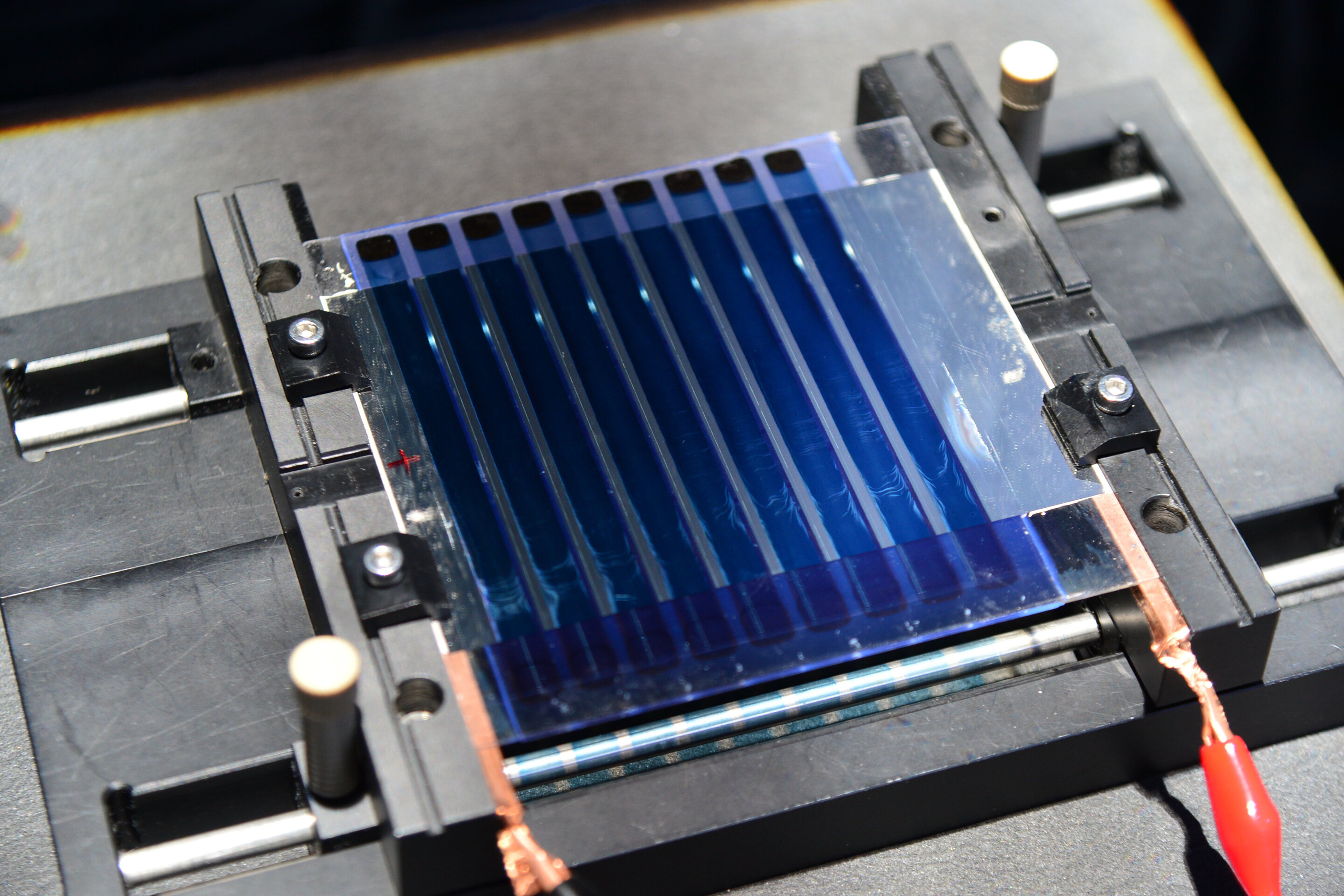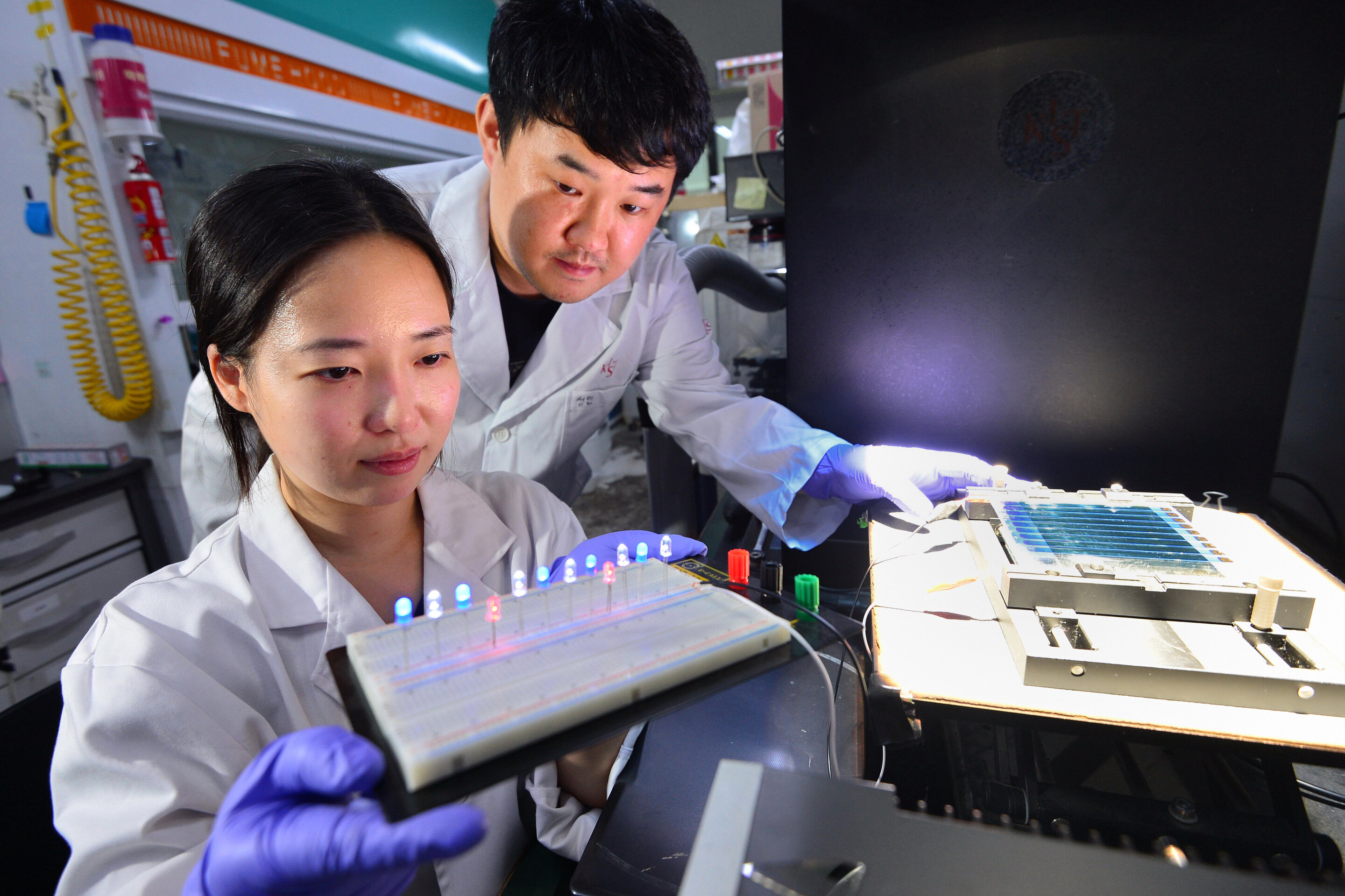
Development of photovoltaics that can be applied like paint for real-life application
by National Research Council of Science & TechnologyResearchers in Korea have successfully developed a large-area, organic-solution-processable solar cell with high efficiency. They achieved their breakthrough by controlling the speed at which the solution of raw materials for solar cells became solidified after being coated. The team, led by Dr. Hae Jung Son from the Photo-electronic Hybrids Research Center of the Korea Institute of Science and Technology (KIST), have identified the difference in the mechanism of film formation between a small area and a large area of organic solar cells in a solution process, thereby making possible the development of high-efficiency, large-area organic photovoltaics.
If a photovoltaic material is made in the form of paint that can be applied to any surface, such as the exterior of a building or a car, it will be possible to achieve energy self-sufficiency and provide low-cost, eco-friendly energy to regions suffering from energy poverty. Such technology would provide easy installation of photovoltaics, even on urban buildings, and the photovoltaic panels could be maintained by re-applying the "paint."
Solution-processable solar cells, which work by coating the surface with the solar cell solution, are not yet feasible for industry. Currently, such large-area photovoltaics present reduced performance and production difficulties due to material- and process-related limitations, and this has been an obstacle to commercialization.
Dr. Son's team at KIST revealed that commercially available organic materials become easily crystallized, which makes them unsuitable for large-area solution processes. The solvent in which the solar cell material is dissolved evaporates to form a film, which occurs slowly, thereby resulting in agglomeration and other phenomena, and this in turn lowers the efficiency of the solar cell. As for the spin-coating method, which is a small-area process employed in laboratory research, the substrate is rapidly rotated during the film formation process in order to speed up the solvent evaporation, which makes it possible to form a film without reducing efficiency.

Based on this information, KIST researchers developed high-performance, large-area organic photovoltaics by controlling the solvent evaporation rate following the coating step in a large-area solution process as a way to form a film optimized for solar cell performance. As a result, the team achieved high-efficiency, large-area organic photovoltaics with 30% higher power conversion efficiency than existing photovoltaics.
Dr. Son said, "The core design principles of solar cell materials capable of high-quality, large-area using the solution will accelerate the development of solution-processable solar cells in the future. [This study] has contributed to raising the efficiency of next-generation solution processable solar cells and the development of core technology for manufacturing large-area solar cell materials required for commercialization."
| More information: So Hyun Park et al, Developement of highly efficient large area organic photovoltaic module: Effects of nonfullerene acceptor, Nano Energy (2020). DOI: 10.1016/j.nanoen.2020.105147 Journal information: Nano Energy |
Provided by National Research Council of Science & Technology